New Technique for Impact Calibration of Wide-Range Triaxial Force Transducer Using Hopkinson Bar
Abstract
:1. Introduction
2. Theory and Method
2.1. Least Squares Method
2.2. Principle of the Hopkinson Bar Method
3. Experiment
3.1. The Triaxial Force Transducer
3.2. Experiment Set-Ups
4. Results and Discussion
4.1. The Calibration Results
4.2. Discussion
4.2.1. Validation of the Method
 be the input force of the transducer calculated from the strain signals at the midpoint of bar; be the actual force on the contact surface between bar and adapter, i.e., the actual input force of the transducer. According to the simulations, the stress distribution on the contact surface between bar and adapter could be considered uniform. So, could be obtained by the product of the stress at point (see Figure 7) and the cross-sectional area of the bar. The
be the input force of the transducer calculated from the strain signals at the midpoint of bar; be the actual force on the contact surface between bar and adapter, i.e., the actual input force of the transducer. According to the simulations, the stress distribution on the contact surface between bar and adapter could be considered uniform. So, could be obtained by the product of the stress at point (see Figure 7) and the cross-sectional area of the bar. The  and were compared in several cases, as shown in Figure 9. It could be seen that the
and were compared in several cases, as shown in Figure 9. It could be seen that the  curves were all in very good agreement with the curves in all the cases. In fact, the relative differences between the durations of the pulses in Figure 9 were less than 2%. The relative differences between the amplitudes of the pulses in Figure 9 were less than 1.5%. It could be considered that the actual input force of the transducer could be accurately measured by the strain signal at the midpoint of the bar. Therefore, the method could achieve the impact calibration of the transducer effectively by generating a measurable reference input force for it. It should be noted that if the structure and usage of the transducer being calibrated are different from Figure 1, the mounting form of the transducer should be changed to ensure the generated reference force can be effectively applied to the sensitive end of the transducer. The method will be valid and applicable, as long as the generated reference load can be effectively applied to the transducer sensitive end and be accurately measured.
curves were all in very good agreement with the curves in all the cases. In fact, the relative differences between the durations of the pulses in Figure 9 were less than 2%. The relative differences between the amplitudes of the pulses in Figure 9 were less than 1.5%. It could be considered that the actual input force of the transducer could be accurately measured by the strain signal at the midpoint of the bar. Therefore, the method could achieve the impact calibration of the transducer effectively by generating a measurable reference input force for it. It should be noted that if the structure and usage of the transducer being calibrated are different from Figure 1, the mounting form of the transducer should be changed to ensure the generated reference force can be effectively applied to the sensitive end of the transducer. The method will be valid and applicable, as long as the generated reference load can be effectively applied to the transducer sensitive end and be accurately measured.4.2.2. Influence of Bullet Geometry
4.2.3. Influence of Wave Propagation
4.2.4. Calibration Range
5. Conclusions and Outlook
- The reference input forces generated by the Hopkinson bar for the sensitive axes of the triaxial force transducer could be accurately measured. The Hopkinson bar is an available and valid force generator for force transducer calibration.
- The transverse sensitivity coefficients of the triaxial force transducer could also be obtained with the proposed method. The main sensitive coefficients of the transducer obtained using the proposed dynamic method were smaller than those obtained using the static method.
- The waveform of the reference input force generated by the Hopkinson bar is related to the geometry of the bullet. The bullet with a smaller taper at impact end can generate reference force with a lower amplitude and a wider duration. With a larger taper, the bullet could generate reference force with a higher amplitude and a shorter duration.
- By adjusting the velocity and geometry of the bullet, the method could achieve a wide calibration range from 104 N to 106 N. The duration of the reference input force generated using the proposed method ranges from 101 μs to 102 μs.
Author Contributions
Funding
Data Availability Statement
Acknowledgments
Conflicts of Interest
References
- Xiong, L.; Jiang, G.; Guo, Y.; Liu, H. A three-dimensional fiber Bragg grating force sensor for robot. IEEE Sens. J. 2018, 18, 3632–3639. [Google Scholar] [CrossRef]
- Huang, G.; Zhang, D.; Guo, S.; Qu, H. Design and optimization of a novel three-dimensional force sensor with parallel structure. Sensors 2018, 18, 2416. [Google Scholar] [CrossRef] [PubMed] [Green Version]
- Fujii, Y.; Fujimoto, H. Proposal for an impulse response evaluation method for force transducers. Meas. Sci. Technol. 1999, 10, N31–N33. [Google Scholar] [CrossRef]
- Park, Y.; Kumme, R.; Kang, D. Dynamic investigation of a binocular six-component force-moment sensor. Meas. Sci. Technol. 2002, 13, 1311–1318. [Google Scholar] [CrossRef]
- Park, Y.; Kumme, R.; Kang, D. Dynamic investigation of a three-component force-moment sensor. Meas. Sci. Technol. 2002, 13, 654–659. [Google Scholar] [CrossRef]
- Schlegel, C.; Kieckenap, G.; Glöckner, B.; Buß, A.; Kumme, R. Traceable periodic force calibration. Metrologia 2012, 49, 224–235. [Google Scholar] [CrossRef]
- Vlajic, N.; Chijioke, A. Traceable dynamic calibration of force transducers by primary means. Metrologia 2016, 53, S136–S148. [Google Scholar] [CrossRef] [PubMed]
- Kumme, R. A new calibration facility for dynamic forces up to 10 kN. In Proceedings of the XVII IMEKO World Congress, Dubrovnik, Croatia, 22–27 June 2003. [Google Scholar]
- Fujii, Y. Measurement of impulse response of force transducers. Rev. Sci. Instrum. 2001, 72, 3108–3111. [Google Scholar] [CrossRef]
- Bruns, T.; Kobusch, M. Impulse force calibration: Design and simulation of a new calibration device. In Proceedings of the 17th International Conference on Force, Mass, Torque, and Pressure Measurement, Istanbul, Turkey, 17–21 September 2001. [Google Scholar]
- Bruns, T.; Kumme, R.; Kobusch, M.; Peters, M. From oscillation to impact: The design of a new force calibration device at PTB. Measurement 2002, 32, 85–92. [Google Scholar] [CrossRef]
- Fujii, Y. Toward dynamic force calibration. Measurement 2009, 42, 1039–1144. [Google Scholar] [CrossRef]
- Fujii, Y. Toward establishing dynamic calibration method for force transducers. IEEE T. Instrum. Meas. 2009, 58, 2358–2364. [Google Scholar] [CrossRef]
- Satria, E.; Takita, A.; Nasbey, H.; Prayogi, I.; Hendro, H.; Djamal, M.; Fujii, Y. New technique for dynamic calibration of a force transducer using a drop ball tester. Meas. Sci. Technol. 2018, 29, 125009. [Google Scholar] [CrossRef]
- Fujii, Y. Proposal for a step response evaluation method for force transducers. Meas. Sci. Technol. 2003, 14, 1741–1746. [Google Scholar] [CrossRef]
- Umeda, A.; Onoe, M.; Sakata, K.; Fukushia, T.; Kanari, K.; Iioka, H.; Kobayashi, T. Calibration of three-axis accelerometers using a three-dimensional vibration generator and three laser interferometers. Sens. Actuators A-Phys. 2004, 114, 93–101. [Google Scholar] [CrossRef]
- Liang, Q.; Wu, W.; Gianmarc, C.; Zhang, D.; Sun, W.; Ge, Y.; Wang, Y. Calibration and decoupling of multi-axis robotic Force/Moment sensors. Robot Cim.-Int. Manuf. 2018, 49, 301–308. [Google Scholar] [CrossRef]
- Xu, K.; Li, C. Dynamic decoupling and compensating methods of multi-axis force sensors. IEEE Trans. Instrum. Meas. 2000, 49, 935–941. [Google Scholar] [CrossRef]
- Wang, Y.; Chen, X.; Xiao, X.; Vershinin, V.; Ge, R.; Li, D. Effect of Lode angle incorporation into a fracture criterion in predicting the ballistic resistance of 2024-T351 aluminum alloy plates struck by cylindrical projectiles with different nose shapes. Int. J. Impact. Eng. 2020, 139, 103498. [Google Scholar] [CrossRef]
- Tanaka, K.; Kurokawa, T.; Ueda, K. Plastic stress wave propagation in a circular bar induced by a longitudinal impact. In Macro- and Micro-Mechanics of High Velocity Deformation and Fracture; Springer: Berlin/Heidelberg, Germany, 1987; pp. 317–323. [Google Scholar] [CrossRef]
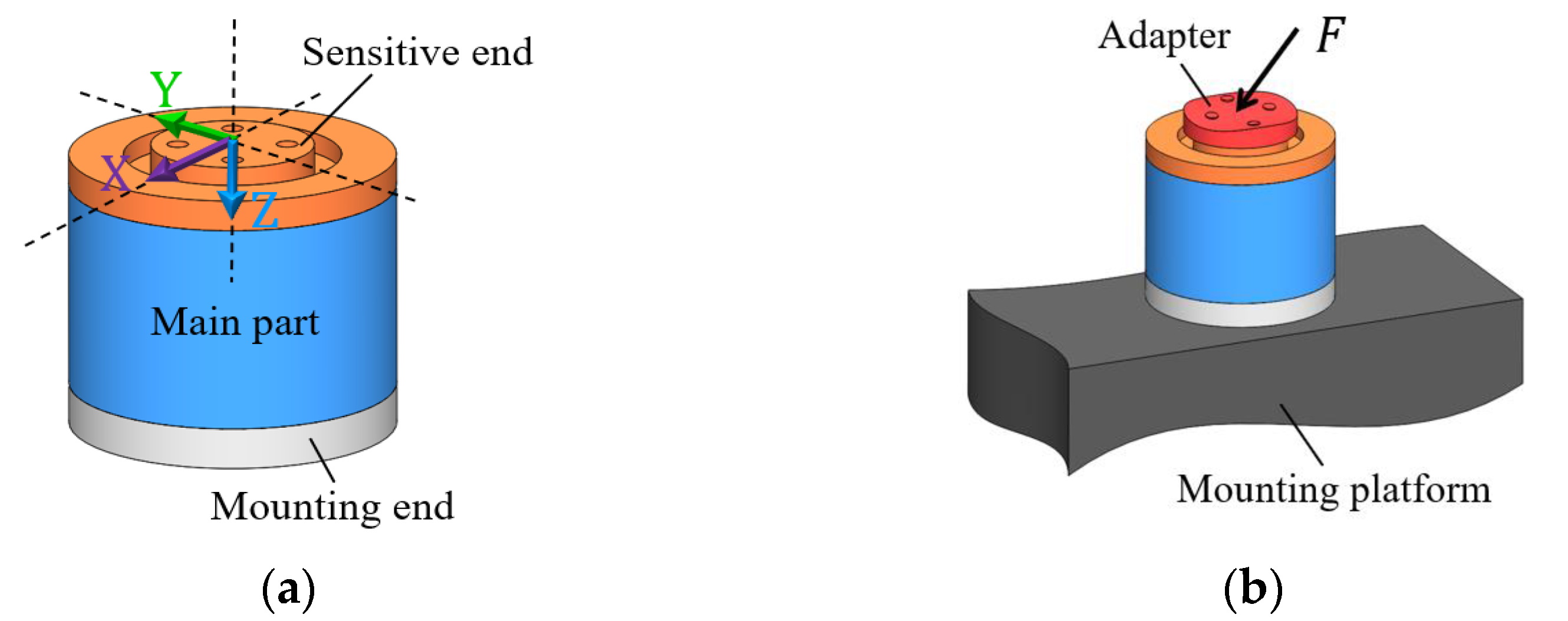


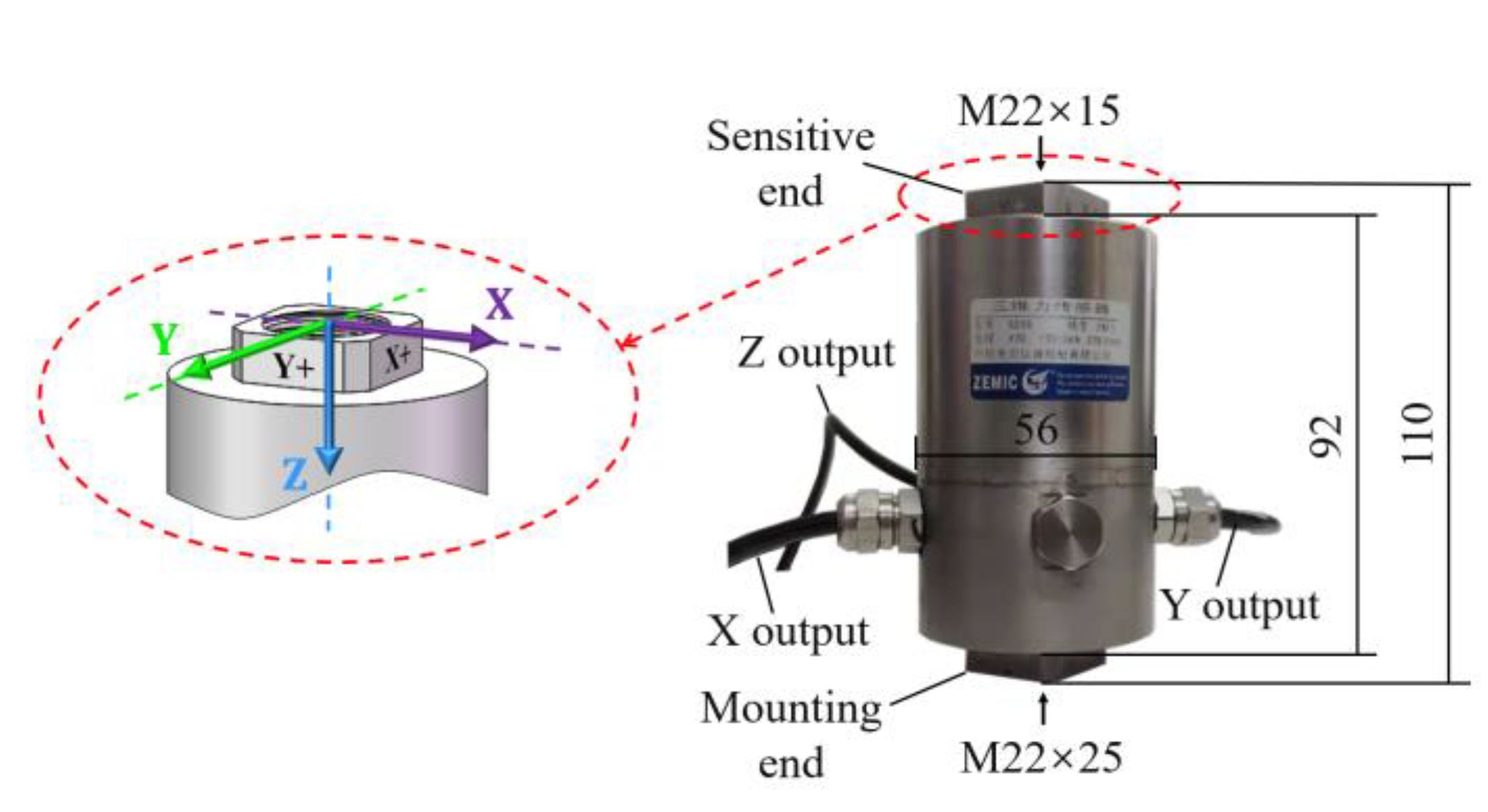
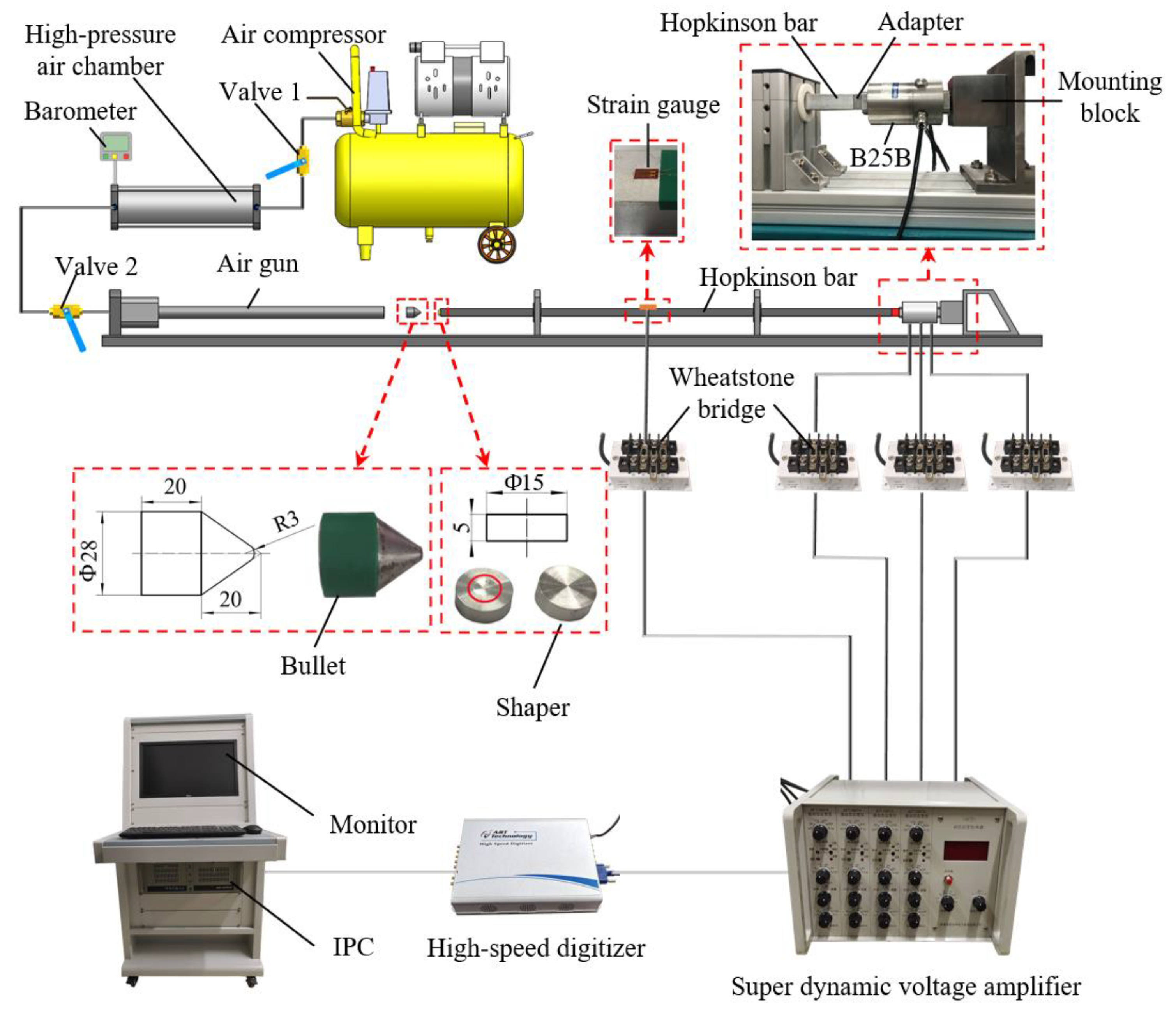
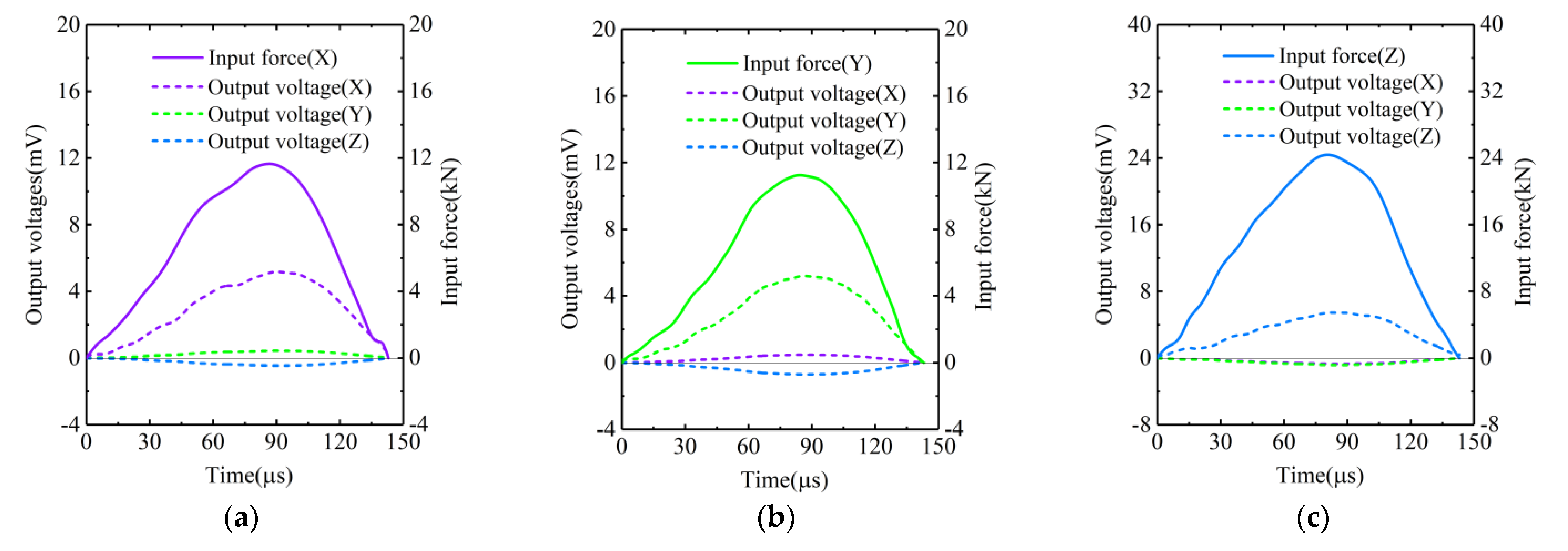
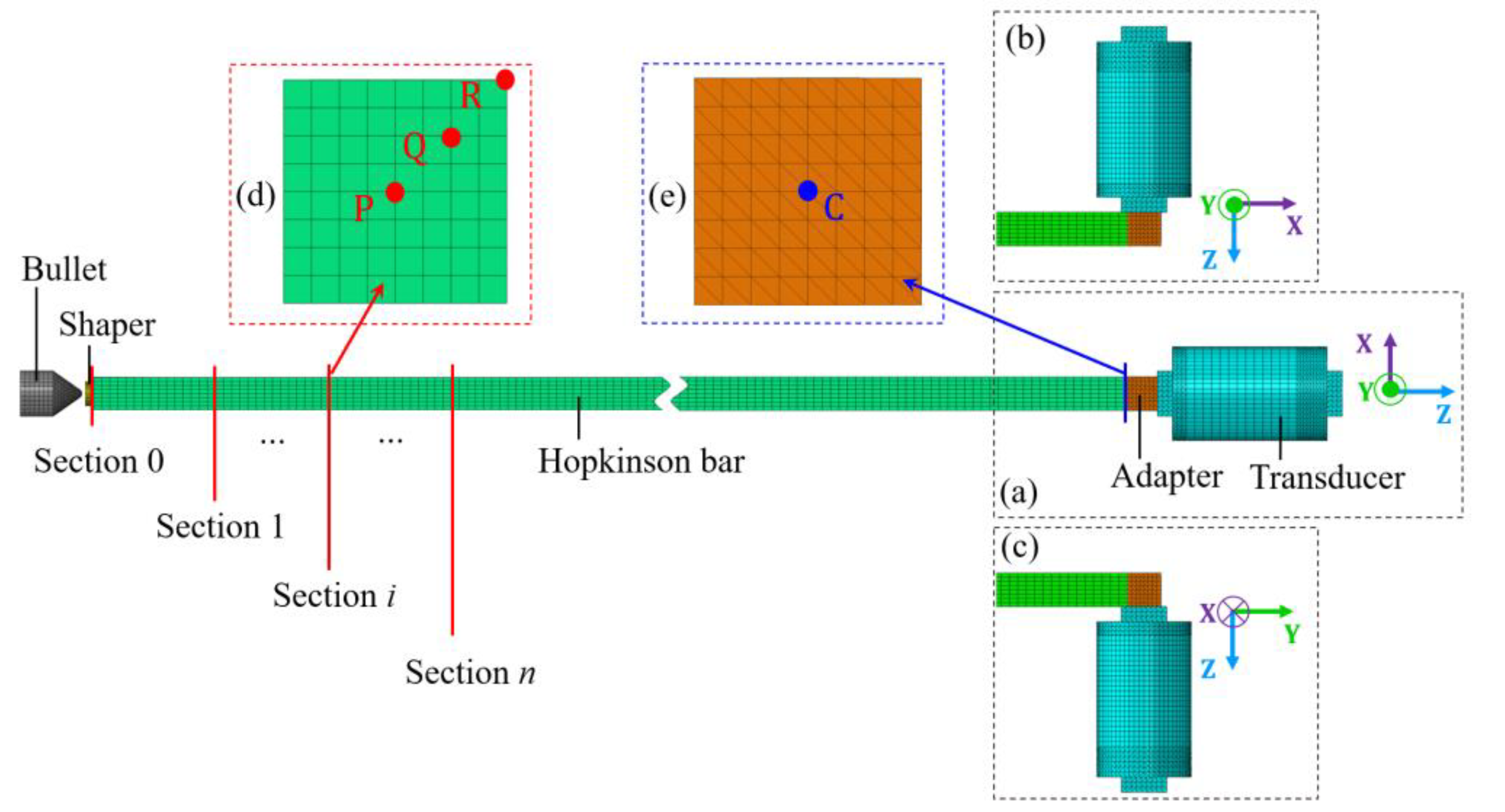
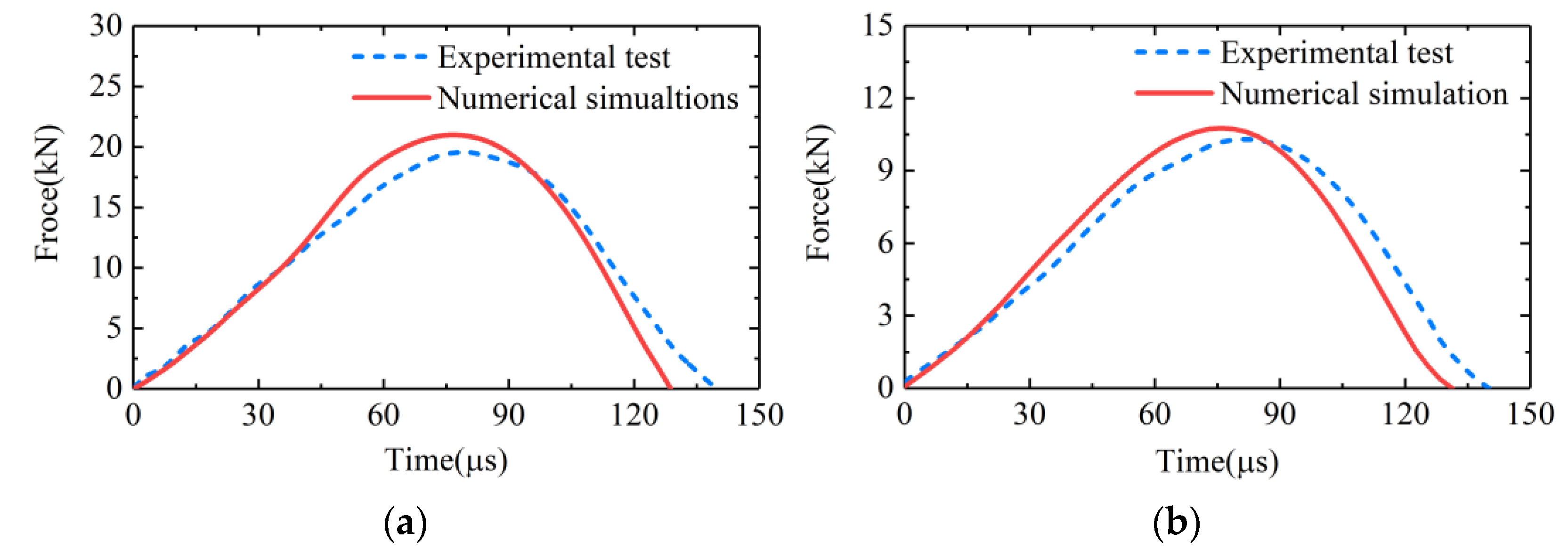
 and in the cases wherein (a) the Z-axis was tested at the velocity of 20 m/s; (b) the Z-axis was tested at the velocity of 10 m/s; (c) the X-axis was tested at the velocity of 12 m/s; (d) the Y-axis was tested at the velocity of 10 m/s.
and in the cases wherein (a) the Z-axis was tested at the velocity of 20 m/s; (b) the Z-axis was tested at the velocity of 10 m/s; (c) the X-axis was tested at the velocity of 12 m/s; (d) the Y-axis was tested at the velocity of 10 m/s.
 and in the cases wherein (a) the Z-axis was tested at the velocity of 20 m/s; (b) the Z-axis was tested at the velocity of 10 m/s; (c) the X-axis was tested at the velocity of 12 m/s; (d) the Y-axis was tested at the velocity of 10 m/s.
and in the cases wherein (a) the Z-axis was tested at the velocity of 20 m/s; (b) the Z-axis was tested at the velocity of 10 m/s; (c) the X-axis was tested at the velocity of 12 m/s; (d) the Y-axis was tested at the velocity of 10 m/s.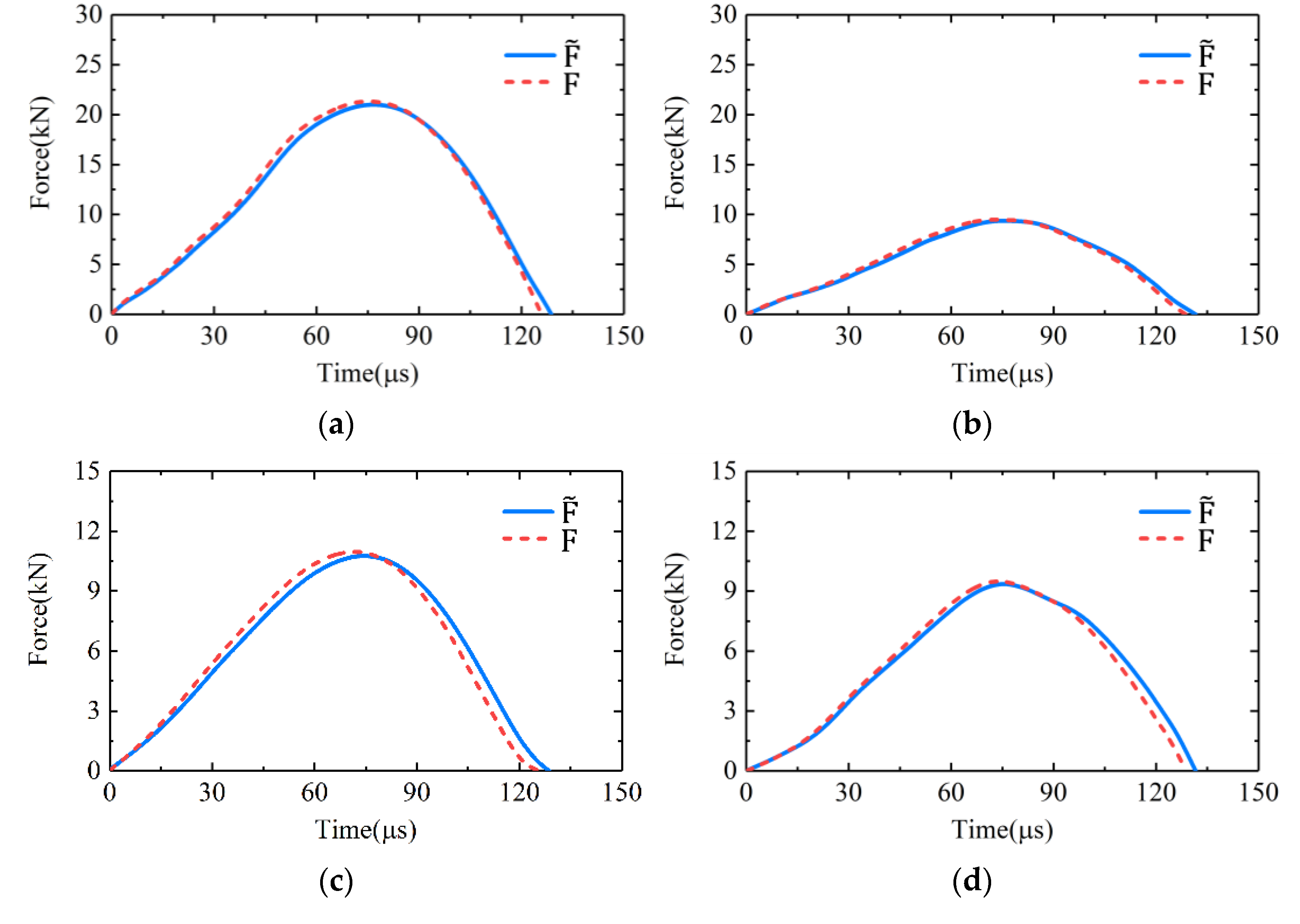

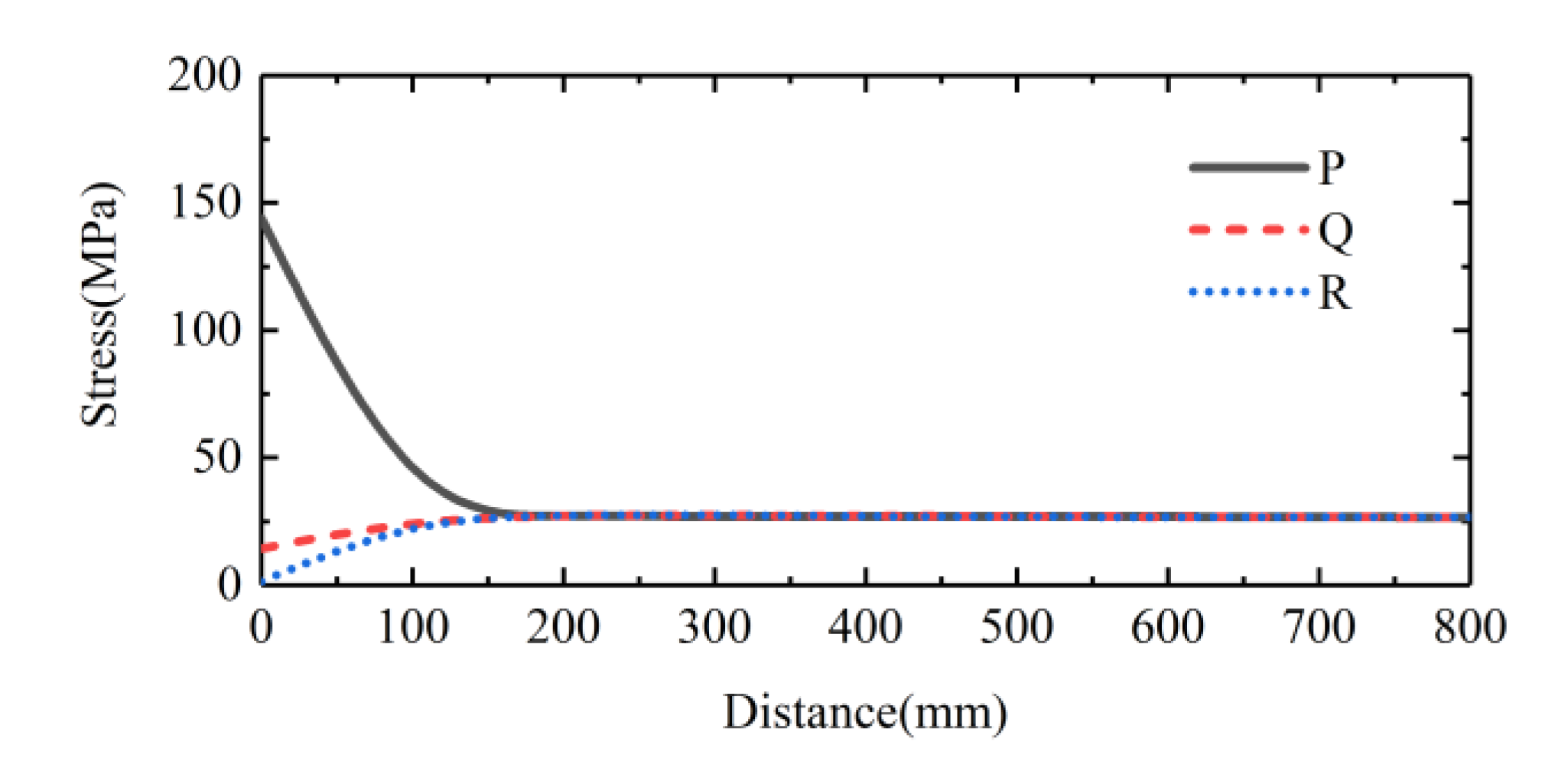
| Sensitive Axis | Range/kN | Excitation Voltage/V | Natural Frequency/kHz | Sensitivity mV/kN |
|---|---|---|---|---|
| X | 15.0 | 10.0 | 12.275 | 0.480 |
| Y | 15.0 | 10.0 | 12.275 | 0.480 |
| Z | 30.0 | 10.0 | 12.273 | 0.223 |
| Material Parameters | Density | Elastic Modulus E/MPa | Poisson Ratio | Johnson-Cook Model | |||
|---|---|---|---|---|---|---|---|
| A/MPa | B/MPa | n | C | ||||
| 45#Steel | 7850 | 210,000 | 0.30 | \ | \ | \ | \ |
| AA7075-T6 | 2800 | 71,000 | 0.33 | \ | \ | \ | \ |
| AA2024 | 2700 | 70,000 | 0.33 | 360 | 649 | 0.68 | 0.0146 |
Publisher’s Note: MDPI stays neutral with regard to jurisdictional claims in published maps and institutional affiliations. |
© 2022 by the authors. Licensee MDPI, Basel, Switzerland. This article is an open access article distributed under the terms and conditions of the Creative Commons Attribution (CC BY) license (https://creativecommons.org/licenses/by/4.0/).
Share and Cite
Wang, Q.; Xu, F.; Guo, W.; Gao, M. New Technique for Impact Calibration of Wide-Range Triaxial Force Transducer Using Hopkinson Bar. Sensors 2022, 22, 4885. https://doi.org/10.3390/s22134885
Wang Q, Xu F, Guo W, Gao M. New Technique for Impact Calibration of Wide-Range Triaxial Force Transducer Using Hopkinson Bar. Sensors. 2022; 22(13):4885. https://doi.org/10.3390/s22134885
Chicago/Turabian StyleWang, Qinghua, Feng Xu, Weiguo Guo, and Meng Gao. 2022. "New Technique for Impact Calibration of Wide-Range Triaxial Force Transducer Using Hopkinson Bar" Sensors 22, no. 13: 4885. https://doi.org/10.3390/s22134885
APA StyleWang, Q., Xu, F., Guo, W., & Gao, M. (2022). New Technique for Impact Calibration of Wide-Range Triaxial Force Transducer Using Hopkinson Bar. Sensors, 22(13), 4885. https://doi.org/10.3390/s22134885





